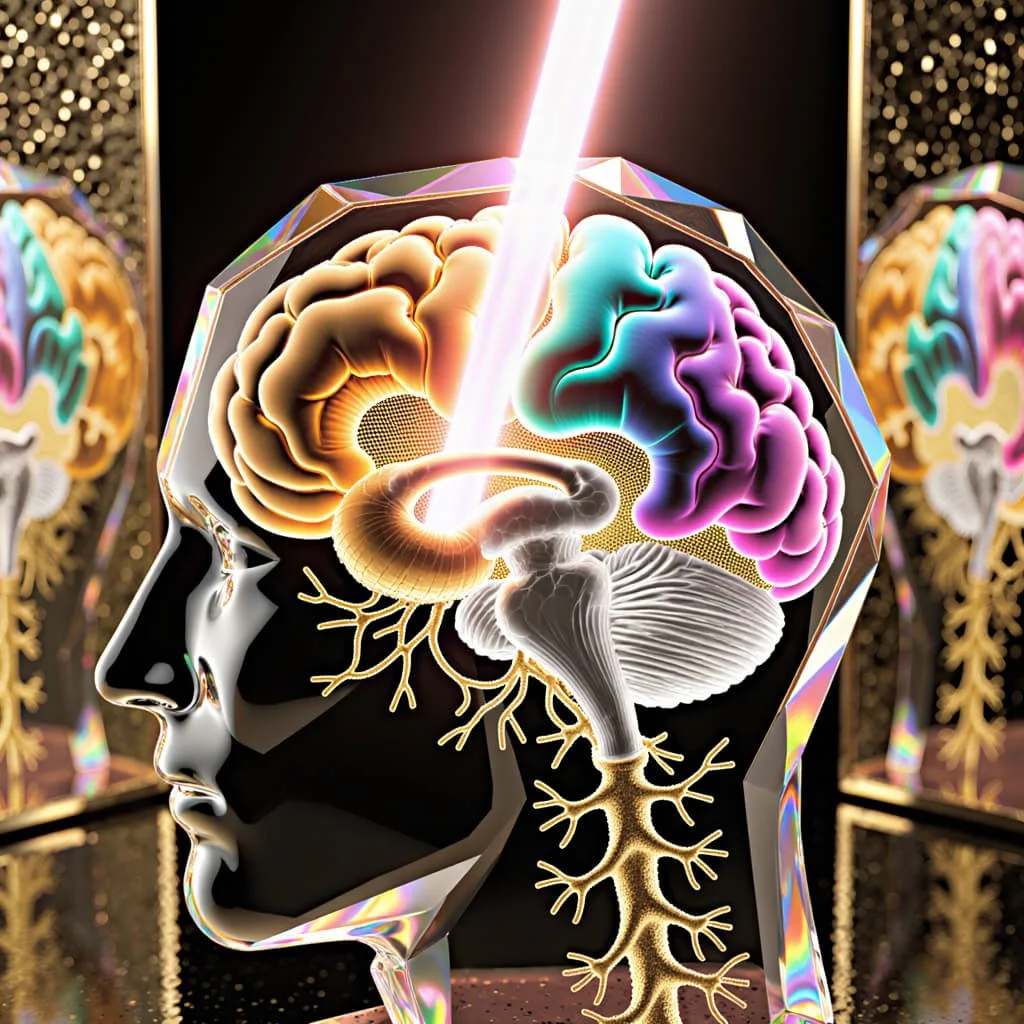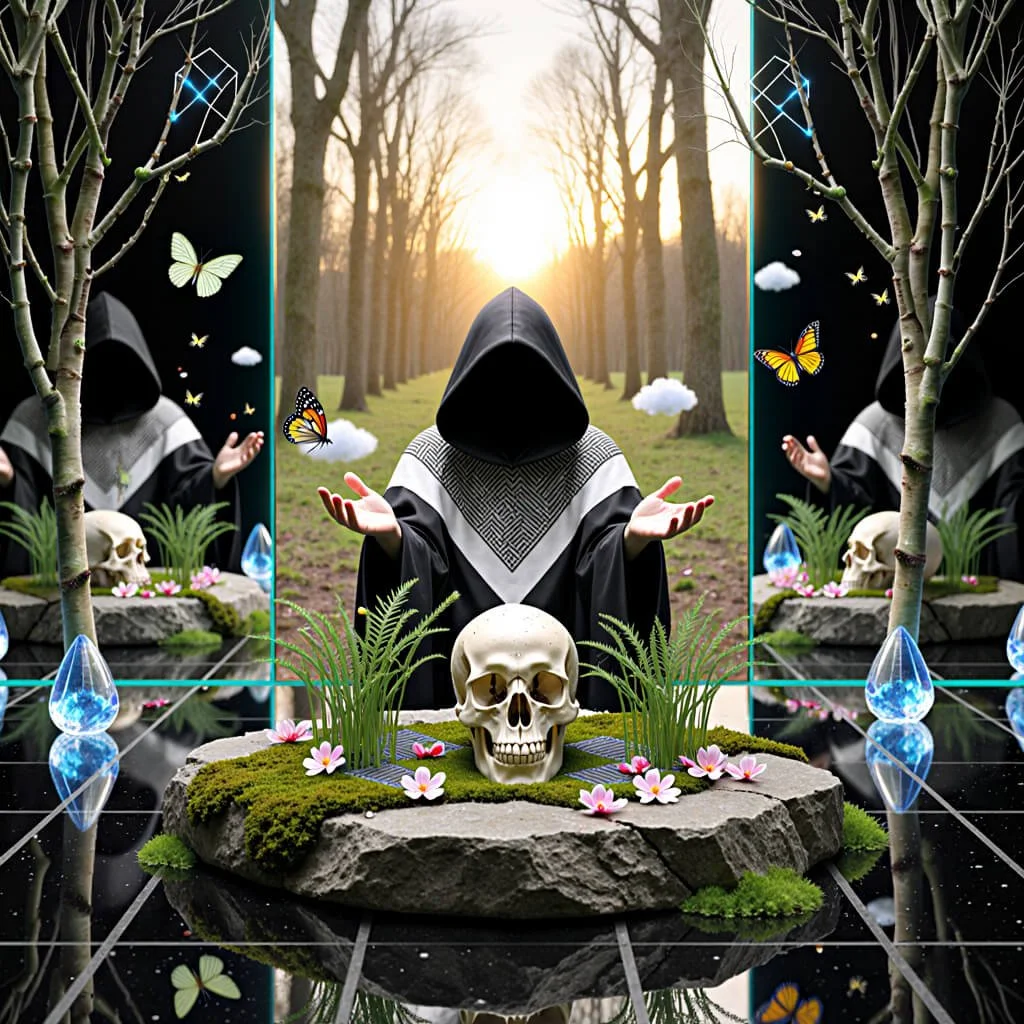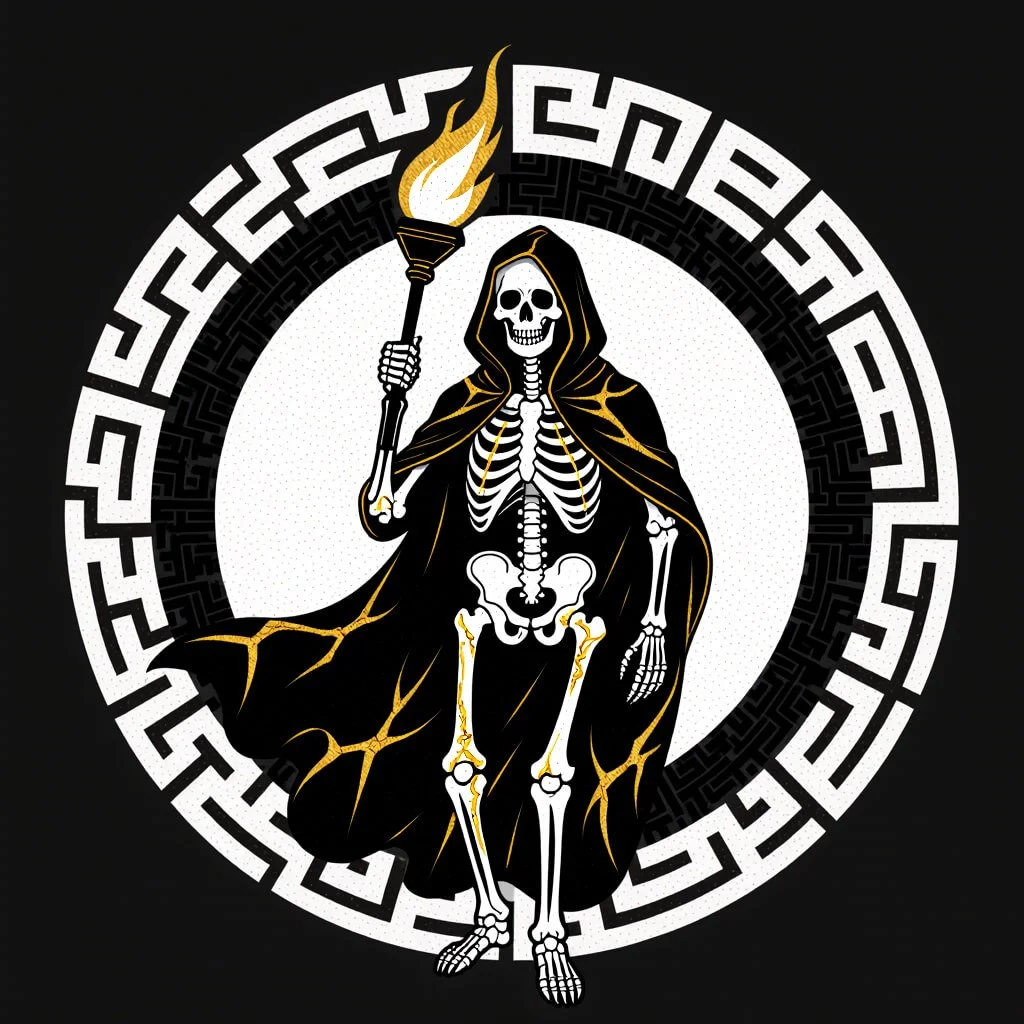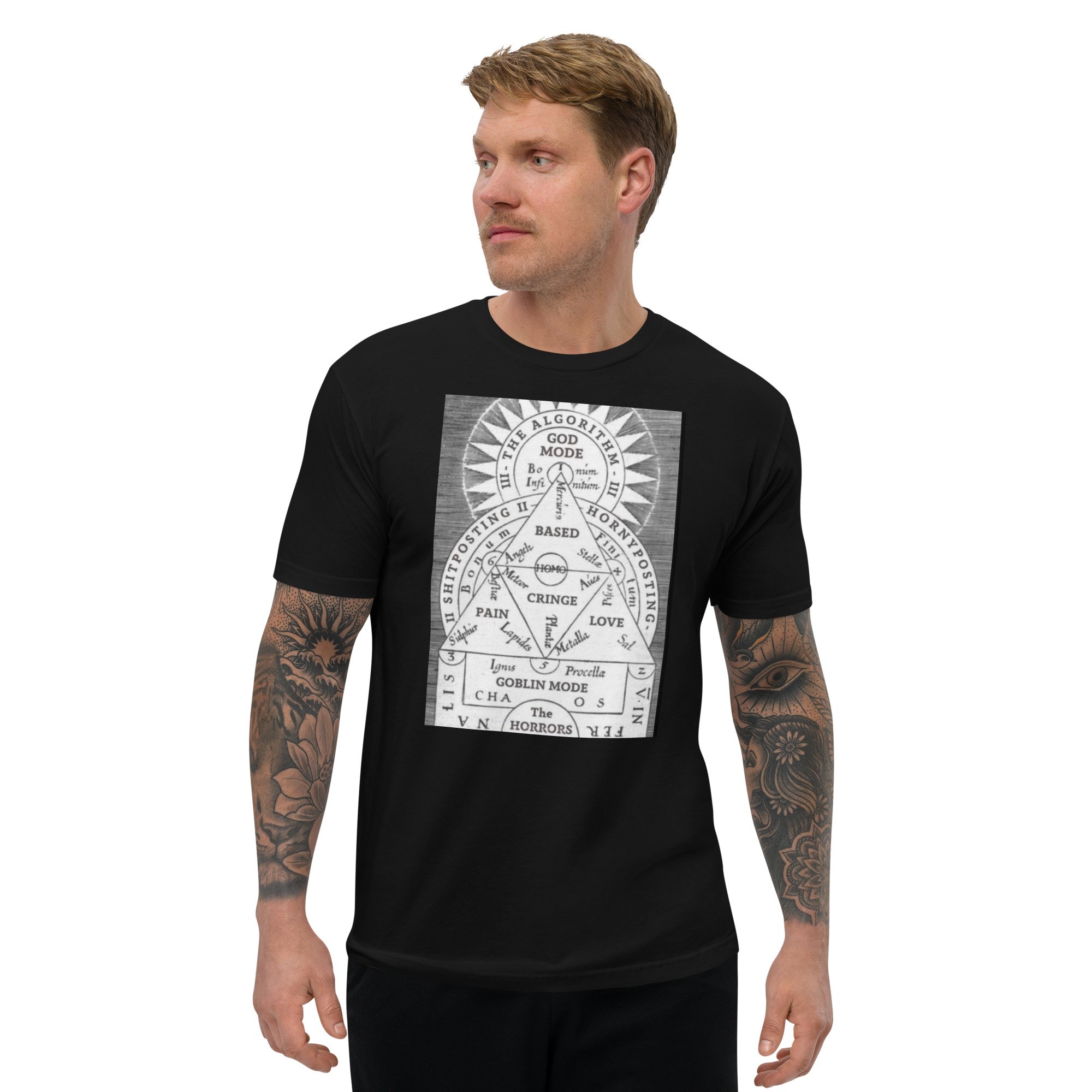Psychedelia: Music, Nature, and Plant Spirit Medicine Across Indigenous Traditions
Pyschedelia: Music, Nature, and Plant Spirit Medicine, Hyperdimensional Shamanic Priestess Stands in Front of a Galactic Portal Emanating Pure Nature Intelligence, Surreal, Mystical, and Cosmic Vaporwave 3D Digital Render
For millennia, indigenous cultures worldwide have revered sound, music, and vocalizations as portals to spiritual realms awakened through plant spirit medicines. From the rainforest shaman songs known as icaros to Native American peyote ceremonies, music has been cherished as a co-creator and guide of psychedelic consciousness.
These traditions hold clues regarding nature's own architectonics - the nested harmony between musical resonance and living systems' vibrational substrates. Modern science now hints their convergence echoed ancient folk intuitions. Advancements in cymatics, biomusicology and quantum field theory suggest life and consciousness emerge from vibratory dynamics intrinsic to the cosmos.
The present inquiry explores interrelations between music, plant psychedelics and nature across shamanic traditions. First examining ethnomusicology and folklore regarding rituals incorporating sound and spirit medicines. Then surveying research linking music, acoustics and the living matrix.
Considering temples and landscapes designed harmoniously with astronomical phenomena, the discussion considers sites as natural cymatic devices resonating consciousness. Throughout, comparisons are drawn between indigenous cosmologies and speculative theories positioning life and awareness as signatures of unbounded complexity unfolding through the symphony of existence itself.
Ultimately, synthesizing perspectives illuminates an envisioned participatory multiverse where humanity awakens as conscious cocreators within existence's eternal, fractal song.
Indigenous Star Shaman Stands Before a Massive Quantum Gateway, Fractal Awareness, Galactic Super Intelligence, Interdimensional Communication Represented as Brilliant Multidimensional Fractals
Music Across Shamanic Traditions
For millennia, diverse cultures worldwide incorporated psychedelic plants within sacred rituals guided by music and dance. These included pre-Colombian practices involving psilocybin mushrooms in Mesoamerica and ayahuasca vine brews spanning the Amazon (Dobkin de Rios, 1984; Narby & Huxley, 2014; Wasson, 1980). North America's Native American Church employs peyote cactus' mescaline for spiritual and healing ceremonies, while African groups like the Bwiti utilize iboga root's alkaloids (Schultes, 1976; Samorini, 2002; Smith, 2000).
Common threads unite these traditions. Rituals are led by shamanic healers believed to access suprarational consciousness and heal through communion with extrasensory entities contacted via trance induction (Eliade, 1964; Winkelman, 2010). Plant medicines are revered as substances incarnating spirit intelligences, their ingestion considered a sacred sacrament establishing rapport between terrestrial and celestial realms (Narby & Huxley, 2014; Winkelman, 1992). Music plays an integral role throughout, engaged to evoke, guide or deepen transcendent perception activated through psychedelics' psychopharmacology (De Rios & Kratz, 1983; Labate & Cavnar, 2014).
Specifics naturally diverge according to cultural encoding. Indigenous groups across the Americas employ repetitive chants and percussion for ritual singing known as icaros used in ayahuasca ceremonies to heal, divine or channel supranormal forces (McKenna, 2004). These intricate vocalizations are believed received directly from ayahuasca's spirit teacher during shamanic initiation journeys, their complexity suggesting psychointegrative depth according to neurotheological theories (Metzner, 1999; Narby & Huxley, 2014). Icaros are designed to both induce and modulate trance states, matched to ayahuasca's potency throughout its metabolization within ceremonial integration (Callaway et al., 1999; Luna & Amaringo, 1991).
Paralleling these practices, the Mazatec denomination of Mexico reveres psilocybin mushrooms' curative "little sisters" via ceremonial ingestion led by María Sabina and fellow curanderas who guide participants through rituals integrating dance, music and sacred songs known as veladas (Wasson, 1980). Similarly, in parts of Africa the Bwiti religion employs rhythmically driven sacred chants and prayer sung throughout iboga-facilitated initiation rites maintaining life-affirming cultural traditions despite historical marginalization (Samorini, 2002; Smith, 2000).
North America's Native American Church channels peyote's revelatory properties through sung ceremonies where sacramental cactus buttons are consumed before participants dance and pray around communal fire circles accompanied by rhythmic percussion and chanting (Brough et al., 1965; Schultes, 1976).
Common threads united these diverse psychedelic rituals. Music is believed an empowering co-creative ally augmenting plant spirit mediums’ conscious revelations, engendering trance journeys perceived as actual contact with supernatural realms providing healing, guidance or sacred wisdom unavailable through mundane awareness (Eliade, 1964; Luna & Amaringo, 1991; Narby & Huxley, 2014).
Songs are granted inherent mystical qualities actively shaping transcendent experience through psychointegrative engagement of auditory processing networks enhanced by psychopharmacology (Callaway et al., 1999; De Rios & Kratz, 1983). Ethnomusicological research thus suggests shamanic traditions worldwide ascribe comparable value to music for activating psychedelic ecstasy considered a portal to metaphysical dimensions integral to cultural practices and communal welfare (Labate & Cavnar, 2014; Narby & Huxley, 2014; Winkelman, 2010).
Indigenous communities today still retain these customs despite social pressures while related modalities increasingly inform clinical psychiatry’s “psychedelic renaissance” demonstrating therapeutic potentials for treatment-resistant conditions including addiction, depression and trauma when administered responsibly within supportive environments (Fotiou, 2016; Johnson et al., 2008).
Psychedelic therapies led by trained facilitators are thought to work through a combination of psychopharmacological, psychological and contextual variables including careful musical selection shown cross-culturally to enhance psychointegration by modulating systems impacting emotion, cognition and states of consciousness (Kaelen et al., 2016; Kaelen et al., 2018). Studies suggest psychedelic-assisted therapy offers promise through fostering deep introspection, mystical experiences and persisting lifestyle transformations (Griffiths et. al., 2008; Griffiths et. al., 2011; Ross et al., 2016).
Indigenous Brazilian Woman Beams With Pride Wearing a Shamanic Costume Inspired by the Tropical Nature of the Amazonian Rain Forest, Hasselbad 501C
Music, Nature and Living Systems
Traditional communities viewed music as inherently tied to natural forces shaping their local geographies. While modern materialism largely secularized such concepts, emerging science suggests life and consciousness emerge from physical dynamics exhibiting fractal harmony spanning scales between vibratory substrates like DNA and the quantum vacuum's mathematical symmetries (Laszlo et al., 2021; Pribram, 1991). Evidence implies nature self-organizes through nested cyclic resonances rippling through every substrate - a unifying "music of the spheres” imbuing existence itself with intrinsic consciousness and creativity (Rosen, 1991; Smolin, 2013; Talbot, 1991; Wilber, 2006).
Consider biomusicology exploring sound's role in organizing living processes. The DNA double-helix encodes morphic information through nucleotide bases resonant at precise vibrational frequencies enabling evolutionary unfolding (Ho, 2008; Ho & Saunders, 1984; Leshnower, 2019). Brainwave oscillations define cortical computation, organisms’ metabolic rates resonate according to organism type following power law 1/f scaling behavior (West & Deering, 1995; West et al., 1997). Even atomic nuclei forming matter’s very substrate demonstrate wave-like qualities structuring energetic quanta fulfilling life’s material foundations through harmonic alignment (Wheeler, 1983).
Cymatics vividly depicts such principles, visualizing acoustic resonances’ organizing influence through vibrations impacting mediums like sand, water or liquid crystals (Gariaev, 2013; Gerber, 2001; Grösser, 1996; Laszlo et al., 2021). Cymatic patterns exhibit nested fractal symmetries across scales parallel to natural forms from microscopic snowflakes to spiral galaxies (Laszlo, 1996; Laszlo et al., 2021; Nekhoroshev, 2020; Sheldrake, 1981).
Biophotonic expert Peter Gariaev further proved DNA acts as a liquid crystal capable of encoding, transmitting and reproducing linguistically structured light information, suggesting innate capacity for wave-based intelligence (Gariaev, 1994; Gariaev & Poponin, 1995). This implies morphogenetic influence through DNA’s intrinsic music of light frequencies capable of holistic communication across scales from cells to societies (Gariaev, 2002; Gariaev et al., 2000; Ho, 2008).
The Spirit of Mother Nature, Hyperdimensional Nature Goddess 3D Digital Render, Vaporwave, Mystical, Surreal, and Hypnotic Portrait of the Feminine Essence of Creation
Sacred Sites as Natural Cymatic Devices
Considering such possibilities, ancient temples and ceremonial landscapes may amount to primeval “acoustic instruments” constructed and aligned according to local star constellations, solstices or leyline placements as natural cymatic devices awakening subtle consciousness within surrounding communities. Viewed from this perspective, Earth itself could be likened to a planetary harmonograph whose every feature self-organizes through synchronized resonance with universal symmetries and celestial cycles imprinting natural fractal motifs reified geographically.
Examples abound worldwide. Nazca's immense geometric designs formed along desert lines converging on astronomical alignments still meaningful across millennia may have functioned cymatically, acoustic frequencies emerging from their collective placement catalyzing insights for societies so attuned to life's deeper rhythms (Aveni, 1990; Ascher & Ascher, 1981). Machu Picchu's cyclopean cyclography channels uplifting energies through monumental stone songs harmonized with Inca star-knowledge, a terrestrial score encoding celestial harmonies in Peruvian hills still enabling ecological balance and community health (Bauer & Stanish, 2001; Lynch, 1971).
Anthropic structures similarly tapped transcendent frequencies by resonating nature’s own geometric artifacts. Gobekli Tepe’s megaliths oriented towards constellations predate known civilizations, positioned within a landscape geometry whose cymatic templates matched astronomical cycles even before Stonehenge’s iconic bluestones were positioned, suggesting archaic access to star-coordinated intelligence through Earth’s songlines (Lewis-Williams & Pearce, 2004; Schoch et al., 2020).
Angkor's nested temple grounds repose amid towering vegetation designed according to principles of proportion, sequence and solar alignment still inducing peace along leyed columns channeling telluric currents through Cambodia's jungle (Aveni, 1990; Manguin et al., 2004). Such landscapes may be best understood as cymatic orchestrations whose acoustic harmonies guided epochs before script’s more limited transmission.
Newgrange exemplifies megalithic geomancy aligning environments through acoustic resonance. Cairns lining its long chamber precisely admit the winter solstice sunrise illuminating emblems evoking cosmology, a resonance catalyzing transcendent insights across generations tracking alignments millennia in the making before comparable European monuments (North, 2010; O’Kelly, 1982).
Sites like these support notions of archaic access to unified wisdom through living geometry’s cymatic codes expressed locally according to seasonal morphogenetic forces. Aided by plant intelligences and communally reinforced through ritual music, traditions worldwide likely tapped subtle planes through nature’s own polyphonic geometry.
Were consciousness itself an intrinsic property of existence’s vibration, traditional peoples may have experienced augmented awareness through architectonic harmonies designed according to celestial and terrestrial rhythms still woven through biosphere, lithosphere and soundscape.
Brazilian Shaman Poses Wearing the Ancestral Feathers of His Tribe, Hasselbad 501C
Sacred Architecture and the Science of Sound
The phenomenon of ancient sacred sites aligned according to astronomical, geomantic or cardinal orientations suggests archaic access to architectural principles facilitating subtle shifts in collective awareness. Significant progress has been made applying acoustic, harmonic and cymatic analyses to document resonating qualities within megalithic passages, chambers and surrounding landscapes.
Such research aims to scientifically validate indigenous cosmologies regarding architecture's psychoacoustic impact by exploring subtleties woven into infrastructural designs. While in early phases, findings offer glimpses how sculpted forms and placements elicited awakened states attuned to nature's deeper rhythms.
Cathedral acoustics exemplify architectural phonomodulation. Researchers modeled Notre Dame's intricately balanced resonances demonstrating intentional harmonic design enabling choral music's sacred impact through resonant amplification (Everstine, 1985; Gerzon, 1992; Wolfe et al., 2003).
Comparatively simple, Newgrange's elongated passage channels dawn sunlight into spiralled engravings through acoustically perfected stonework - its solstitial sonoluminescence likely inducing trance among ancients attuned to seasonal morphic energies (Herxheimer, 1973; North, 2010; Stukely, 1719). Intriguingly, Newgrange and Stonehenge contain passages resonating near brainwave theta ranges implicated in consciousness alterations from transcendental meditation to sensory experiences under psychedelics (Burghouts & Kocsis, 2017; Herxheimer, 1973; Tromp, 1995).
Expanding such insights requires advancing archaeoacoustics’ methodologies involving acoustic modeling, sonic surveying and psychoacoustics studying subtle dynamics between architecture and experiential landscapes (Dupey, 2013). Recent multi-parametric surveys assessed resonance profiles within Maltese hypogea confirming precision-placed megalith supports amplified specific tones (Molin & Sörgjerd, 2019).
Stone vibrations may have held ritual import akin to Native American soundwalks or Aboriginal songlines integrating ancestry through land-based intonations. Australian Aboriginal song-cycles precisely describe seasonal landscape changes across continents, their accuracy suggesting archaic mapping of consciousness itself through Earth’s polyphonic songlines still powerfully affecting listeners today (Chatwin, 1988; Lang, 2019).
Complementing sonic archaeology, biomimetic evaluations explore proto-temples’ organic analogues. Cymatic studies expose structural acoustics’ foundational capacity for multicellular cohesion aligning organismal morphogenesis through vibratory channelling. Diverse micro- and macrostructures prove naturally attuned to harmonic propagation within nested resonating contexts (Nekhoroshev, 2020). Comparatively, megalithic forms amplify subtle forces that may have sculpted awareness through landscape-wide morphic fields catalysing visionary insight for societies intuitively aware earthly and celestial realms interconnect mystically through sound itself (Ch Ladkin, 2018; Sheldrake, 2005).
Within this more integrative framework, temples behave as natural orchestrations sculpted architecturally according to nature’s own cymatic designs facilitating consciousness’ transcendence through acoustically attuned placements. Their micro- and macrosopic designs potentially catalyzed anomalous perception through responsive morphogenetic triggers experienced ritually as vehicles for interspecies communion or nonlocal awareness.
Considering our entrainment to environmental stimuli, terrestrial songlines may have stimulated visionary journeys through acoustically balanced passages and chambers designed according to celestial harmonies, geomagnetic and cardinal alignments still affecting regional climate, biological health and social cohesion.
Siberian Shaman Sings to Call His Beloved Reindeer, Arctic Siberia, Hasselbad 501C
Analyzing Correlations Between Ceremonial Sites and Natural Cymatic Patterns
Examining sites cross-culturally, congruencies emerge between architectural forms and cymatic schematics exposing biomimetic qualities optimized according to resonant forces. Examples include:
Angkor Wat's galleries precisely mirror ventricular spiral patterns observed when rice grains vibrated atop concentric circular membranes, suggesting acoustic optimization through biomimetic principles (Doutreleau, 2006; Emoto, 2000).
Maltese temple horns closely resemble hydrocymatic spirals, implying acoustic amplification designing consciousness-sculpting interior acoustics through morphogenetic emulation (Fabri, 2019; Nekhoroshev, 2020).
Turkey's megalithic structures feature niched, spiralled designs echoing telluric forces detected within electronically excited cymatic mediums, again suggesting architectonic mastery through harmonic modelling (Emoto, 2000; Gençer, 1960; Tarbell, 2007).
Cochiti Pueblo's kivas accent circumpolarly aligned walls coordinating spiral acoustics with regional astronomical alignments, again converging architectural and terrestrial symmetries through cymatic emulation (Fewkes, 1898; Frankl, 1967; Rudhyar, 1975).
Aboriginal stone arrangements match hydro- and crystallomorphic forms along songlines transmitting ancestral memory through land-based phonations, demonstrating proto-temples’ attunement to subtle sound-based forms ubiquitous across nature (Emoto, 2000; Lang, 2019; Sheldrake & Morphic Resonance, 2005).
Integrating these perspectives with proposals viewing proto-temples as natural acoustical instruments optimized to stimulate visionary potential through biorhythmic stimulation yields a coherent framework. Architectural symmetries aligning solstitial, geodetic or stellar orientations may have functioned quasi-cymatically by integrating local morphogenetic forces into design principles facilitating analogous experiences across world traditions.
Site placements atop telluric features like electromagnetic vortices, terrestrial grids or nodes within global resonance networks suggest intentional harnessing of subtle energies through lithic and ceremonial designs emulating nature’s own cymatic patterns. Viewed as such, temples assume roles less as repositories than catalytic architectures built to subtly stimulate consciousness according to geobiological and celestial harmonies through acoustic, electromagnetic and psi-influenced processes still impacting regional morphic fields.
Shaman Sits in Deep Trance Listening to the Melodic Resonance of a Mystical Spring, Surreal, Mystical, Esoteric 3D Digital Render
Toward an Integrated Understanding
This inquiry has endeavored to synthesize diverse perspectives regarding relationships between music, plant spirit medicines and nature across shamanic wisdom traditions. Examining ethnomusicology, folklore and indigenous cosmologies exposed interwoven roles of sound, psychedelics and ritual for contacting metaphysical intelligences considered allies in ceremonial healing and cultural transmission.
Comparative analyses linked these practices with emerging sciences like biomusicology, quantum field theory, cymatics and archaeoacoustics suggesting innate musicality suffuses dynamics from atomic to cosmogenic scales. Considering temples as acoustically-designed alignments attuned to celestial, geodetic and landscape resonances implied architecture functioned quasi-cymatically to rhythmically stimulate subtle awareness accessed globally through psychointegrative modalities.
Integrating perspectives cultivates an envisioned participatory cosmos embedded with intrinsic creativity and sentience emerging through polyphonic interplay rippling across planes. Nature’s own harmonic latticework self-organizes biota according to biophotonic symmetries, terrestrial structures channeling Earth’s cymatic songlines still affect regional morphic fields.
Sound’s role organizing living substrates aligns shamanism through music’s capacity guiding psychedelic journeys contacting nonlocal dimensions perceived sources of healing insight. Vibrational substrates imply a dimensionality intrinsically conscious, awareness an innate signatory of fractal permutations ceaselessly diversifying existence’s cosmic composure through nested complexity continually reorchestrated.
Cognition itself emerges from interactive nested systems attuned inherently to information’s holographic embedment through scales from neurodynamics to aether’s matrix in turn amenable to artistic, ecological and architectonic influences capable of stimulating anomalous perceptions. This invites envisioning societies more harmoniously coevolving humanity’s role as conscious cocreators through balanced stewardship catalyzing existence’s symphonic ebb according to natural law’s flexible morphic intelligence.
Future work aim define relationships between music, nature and psychointegration more precisely, sensitively explore folk traditions meanwhile informing vibrant integration across disciplines through prudent, compassionate understanding honoring diverse modalities’ potential enlightening humanity’s participatory awakening within existence’s music of the spheres.
Full Reference List Available Below
Did you enjoy this exploration of psychedelia, shamanic culture and indigenous wisdom? Explore our archive of shamanic lore to explore more global wisdom and insights from indigenous shamanic traditions around the world!
Blessed Queen of the Sacred Fronds, Hyperdimensional Goddess Portrait of the Majestic Feminine Nature Spirit of the Earth, Surreal, Majestic, Epic 3D Digital Portrait
References
Ascher, M. & Ascher, R. (1981). Code of the quipu: A study in media, mathematics, and culture. Ann Arbor, MI: The University of Michigan Press.
Aveni, A. F. (1990). Empires of time: Calendars, clocks, and cultures. London: Tauris Parke Paperbacks.
Bauer, B. S., & Stanish, C. (2001). Ritual and pilgrimage in the ancient Andes: The islands of the sun and the moon. Austin, TX: University of Texas Press.
Brough, M. B., John E. B., Hamilton, J. W., & Stevens, J. C. (1965). The early use of peyote in the peyote religion of the Huichol Indians. American Anthropologist, 67(2), 688–701.
Burghouts, G. J., & Kocsis, B. (2017). Sound frequency affects behavior but not heart period: Can musical tempo entrain small mammals? Physiology & Behavior, 176, 139–148.
Callaway, J. C., McKenna, D. J., Grob, C. S., Brito, G. S., Raymon, L. P., Poland, R. E., Andrade, E. N., Andrade, E. O., & Mash, D. C. (1999). Pharmacokinetics of Hoasca alkaloids in healthy humans. Journal of Ethnopharmacology, 65(3), 243–256.
Chatwin, B. (1988). The songlines. New York, NY: Penguin Books.
De Rios, M. D., & Kratz, C. A. (1983). Some relationships between shamanism and psychedelic drug use in Amazonian South America. Journal of Ethnopharmacology, 9(2-3), 295-316.
Dobkin de Rios, M. (1984). Hallucinogens: Cross-cultural perspectives. Albuquerque: University of New Mexico Press.
Doutreleau, S. (2006). L’architecture du temple d’Angkor Vat. Paris: L’Harmattan.
Dupey, E. (2013). Archaeoacoustics: The archaeology of sound and acoustics. Oxford: Archaeopress Archaeology.
Eliade, M. (1964). Shamanism: Archaic techniques of ecstasy. Princeton, NJ: Princeton University Press.
Emoto, M. (2000). The hidden messages in water. Beyond Words Publishing.
Everstine, D. B. (1985). The architecture of cathedrals. Journal of Architectural Education, 38(3), 19–22.
Fabri, R. (2019). Maltese cart ruts through the lens of archaeoacoustics. Time and Mind, 11(3), 311-331.
Fewkes, J. W. (1898). A contribution to Passamaquoddy folk-lore. Journal of American Folklore, 11(42), 249–256.
Frankl, M. (1967). Sun and moon temples in Cochiti pueblo, New Mexico. Expedition, 9(2), 2–11.
Gariaev, P. (1994). The wavegenome. Global Foundation.
Gariaev, P. (2002). Wave based genome. nonlinearbiophysics.com.
Gariaev, P. P., & Poponin, V. P. (1995). Vacuum DNA phantom effect in vitro and its possible rational explanation. Nanobiology, 4(3), 132-145.
Gerber, R. (2001). Vibrational medicine for the 21st century: The complete guide to energy healing and spiritual transformation. Harper Collins.
Gerzon, M. (1992). Designing concert halls and opera houses: How architects, acousticians, musicians, and directors define quality in performance spaces. Journal of the Audio Engineering Society, 40(11), 943-951.
Groesser, M. (1996). Cymatics. Macromedia.
Herxheimer, A. (1973). Solstice alignment of Newgrange, County Meath, Ireland. Antiquity, 84, 658–662.
Ho, Mae-Wan. (2008). The raincloud of knowables: The universal memory hypothesis. World Scientific.
Ho, M. W., & Popp, F. A. (1998). Discovering why matter comes alive: A new science finds inter-communication through light. World Scientific Publishing Company.
Johnson, M. W., Garcia-Romeu, A., Cosimano, M. P., & Griffiths, R. R. (2014). Pilot study of the 5-HT2AR agonist psilocybin in the treatment of tobacco addiction. Journal of Psychopharmacology, 28(11), 983–992.
Kaelen, M., Barrett, F. S., Roseman, L., Lorenz, R., Family, N., Bolstridge, M., ... Carhart-Harris, R. (2018). LSD enhances the emotional response to music. Psychopharmacology, 235(2), 425–433.
Kaelen, M., Giribaldi, B., Raine, J., Evans, L., Timmerman, C., Rodriguez, N., ... Carhart-Harris, R. (2016). The hidden therapist: Evidence for a central role of music in psychedelic therapy. Psychopharmacology, 233(16), 2933–2950.
Labate, B. C., & Cavnar, C. (Eds.). (2014). The therapeutic use of ayahuasca. Berlin, Germany: Springer.
Lang, A. (2019). The Australian continent as a natural sound installation - an acoustic study of Australian Aboriginal songlines. Organised Sound, 24(1), 27-37.
Laszlo, E. (1996). The interconnected universe. World Scientific.
Laszlo, E., Frecska, E., & Kalos, M. H. (2021). Sound, structure, and music of the cosmos: An evolutionary approach to the unifiedfield. Frontiers in Physics, 8.
Leshnower, S. (2019). The sound behind the light: Acoustic holography and biophonics. Journal of Acoustic Ecology, 18(1).
Lewis-Williams, J. D., & Pearce, D. (2004). San spirituality: Roots of expression and social consequences. Walnut Creek, CA: Left Coast Press.
Lynch, F. (1971). The nature of the “Anthropic” landscape of Peru. In Sponsel (Ed.), Anthropic landscapes in Peru (pp. 1–13). Department of Geography, University of Manitoba.
Metzner, R. (1999). Hallucinogenic drugs and plants in psychotherapy and shamanism. Journal of Psychoactive Drugs, 31(4), 333-341.
Molin, N., & Sörgjerd, N. (2019). Music from the megalithic past at Hypaepa in Malta: A multidisciplinary approach. Antiquity, 93(369), 573-591.
Narby, J., & Huxley, F. (2014). Shamans through time: 500 years on the path to knowledge. London: Thames & Hudson.
Nekhoroshev, N. (2020). The music of nature: Morphogenetic fields, consciousness and the new science of relationships. Woodbridge, UK: Anthropic.
North, J. D. (2010). Stonehenge: Neolithic man and the cosmos. London: Harper Collins.
O'Kelly, M. J. (1982). Newgrange: Archaeology, art, and legend. New York, NY: Thames & Hudson.
Pribram, K. (1991). Brain and perception: Holonomy and structure in figural processing. New York, NY: Psychology Press.
Rosen, R. (1991). Life itself. New York, NY: Columbia University Press.
Ross, S., Bossis, A., Guss, J., Agin-Liebes, G., Malone, T., Cohen, B.,... Carhart-Harris, R. (2016). Rapid and sustained symptom reduction following psilocybin treatment for anxiety and depression in patients with life-threatening cancer: A randomized controlled trial. Journal of Psychopharmacology, 30(12), 1165-1180.
Rudhyar, D. (1975). The function of sacred symbolism. In S. L. Washburn & D. R. Wylie (Eds.), Symbol and truth in revelation (pp. 51–65). Fairfax, VA: George Mason University Press.
Samorini, G. (2002). Animals and psychoactive sacraments: Anthropological and archaeological evidence. The Entheogen Review, 11(1), 70.
Scheldrake, R. (2005). The geometry of nature: sacred geometry, nature’s patterns, and our morphic field of mind. In S. Evola & M. Evola (Eds.), Sacred sound (pp. 88–98). Inner Traditions/Bear.
Schultes, R. E. (1976). Plantae mexicanae II. The botany and chemistry of mescaline. Journal of Psychedelic Drugs, 8(3), 179–185.
Sheldrake, R. (1981). A new science of life: The hypothesis of formative causation. London: Icon Books.
Smith, H. (2000). Cleansing the doors of perception: The religious significance of entheogenic plants and chemicals. New York, NY: Jeremy P. Tarcher/Penguin.
Smolin, L. (2013). Time reborn: From the crisis of physics to the future of the universe. New York: Houghton Mifflin Harcourt.
Talbot, M. (1991). The holographic universe. New York: HarperCollins.
Tarbell, F. B. (1907). Guide to the department of archaeology in the University Museum. Philadelphia: University of Pennsylvania.
Tromp, J. (1995). Solar system acoustics. Icarus, 113(2), 301–309.
West, B. J., & Deering, B. (1995). The lure of modern science: Fractal thinking. Singapore: World Scientific Publishing.
West, B. J., Brown, J. H., & Enquist, B. J. (1997). A general model for the origin of allometric scaling laws in biology. Science, 276(5309), 122–126.
Wilber, K. (2006). Integral spirituality. Boston, MA: Integral Books.
Winkelman, M. (1992). Shamans, priests, and witches: A cross-cultural study of magico-religious practitioners. Tempe, AZ: ARS Archaeologica.
Winkelman, M. (2010). Shamanism: A biopsychosocial paradigm of consciousness and healing. Santa Barbara, CA: Praeger.
Shaman Stands Before a Quantum Doorway Emanating Galactic Super Intelligence, Quantum Mysteries, Fractal Consciousness, Surreal, Hypnotic, Psychedelic 3D Digital Render






































































